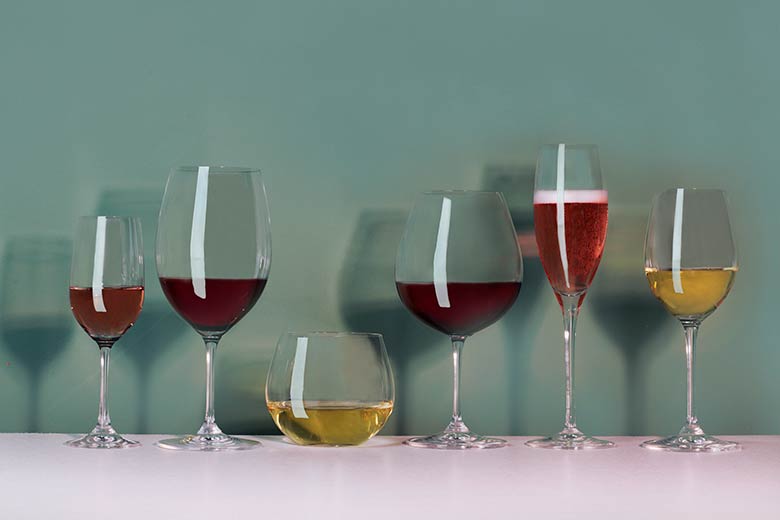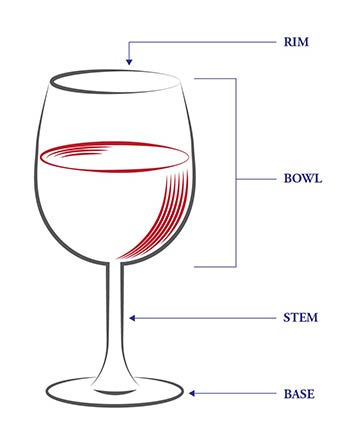A Guide to Wine Glasses

Carefully selected wines deserve to be served in glassware designed for wine! Appropriate glassware increases your enjoyment of the wine significantly. It’s easy to get in the weeds on this subject, in search of the proverbial best wine glasses. Let me offer some simple tips and ideas on the various types of wine glasses available.
First, realize drinking wine is, fundamentally, a sensory experience. As you taste and contemplate a glass of wine your senses become engaged. Your ability to perceive a wine’s color, aroma, flavor and texture will be impacted by the glass you are tasting the wine from. The options in wine glasses are immense and can be overwhelming. Let’s zero in on the core features you want in good wine glasses.
Regardless of wine glass shape, size or design, they ideally, are clear. If the glass is opaque, we literally can’t see the myriad of colors wine presents. A clear glass allows you to see the true color as well as the clarity of the wine. Color indicates several factors such as the type of grape used and the age of the wine.
A thin, delicate rim allows wine to pass from the bowl to your mouth more gracefully. A well-made wine glass feels balanced and light in your hand.
Still wines (Red, White and Rosé) all benefit from being served in wine glasses that feature a bowl large enough to swirl the wine. This swirling brings air into the wine, releasing the wine’s aromas. The larger the bowl, the more the wine is exposed to the air, allowing the aromas to accumulate in the bowl. The bowl should also taper in slightly at the top. This wine glass shape helps to intensify and direct the aromas as they are released from the swirling up to the nose.

For simplicity, I recommend the classic Riedel egg-shaped wine glass. Claus Riedel lit up the wine world when he debuted a wine glass with a simple, egg-shaped bowl, in 1958. The lightweight, slender design was the essence of form following function: It enclosed the wine's bouquet, focusing the aromas toward the nose and allowing oenophiles to savor the full flavor, depth and balance of the wine in a way that hadn't been possible before. We have relied on the Riedel egg at Duckhorn Vineyards Estate House since we began receiving tasting guests in 2001. With a dozen “eggs” in your wine glass storage cabinet, you are set for enjoying still wines.
I also recommend every home have a least a half dozen “flutes” for the service of Sparkling Wine and Champagne. A flute is intentionally narrow and is designed to concentrate and extend bubbly’s natural effervescence.
For outdoor settings like our Courtyard Tastings at Paraduxx, stemless wine glasses can be quite handy. A stemless glass offers the wide bowl and thin lip desired but, without a stem, it is less likely to blow or tip over. Stemless glassware requires less storage space and they are generally easy to wash in your dishwasher too.
Cheers to great wines served in good wine glasses!
Kay Malaske
